P9 - Scatter Control and Filtration
1/34
There's no tags or description
Looks like no tags are added yet.
Name | Mastery | Learn | Test | Matching | Spaced |
|---|
No study sessions yet.
35 Terms
- High kVp
- Thick tissue-dense body part
- Large x-ray field size (collimation)
State the factors controlling scatter
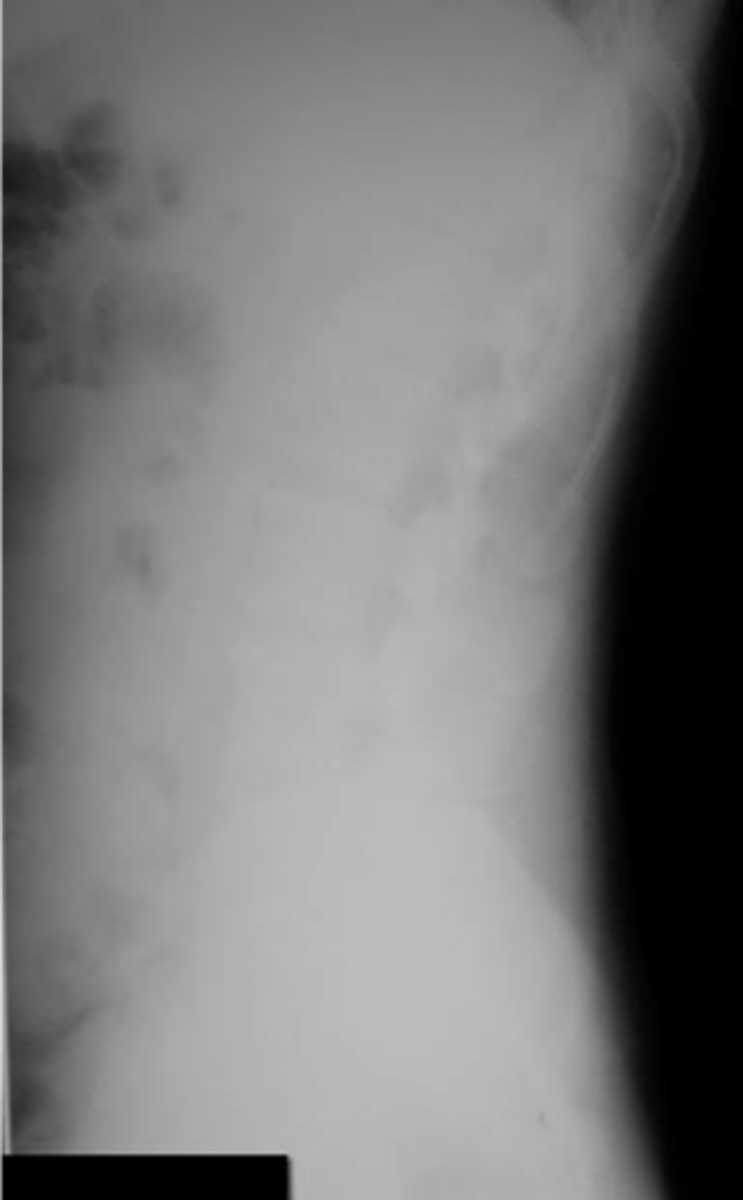
- Make less scatter radiation
- Prevent scatter photons from reaching the film
State the scatter control strategies
Collimation
_____ is used to restrict the size and shape of the x-ray beam and to reduce patient exposure
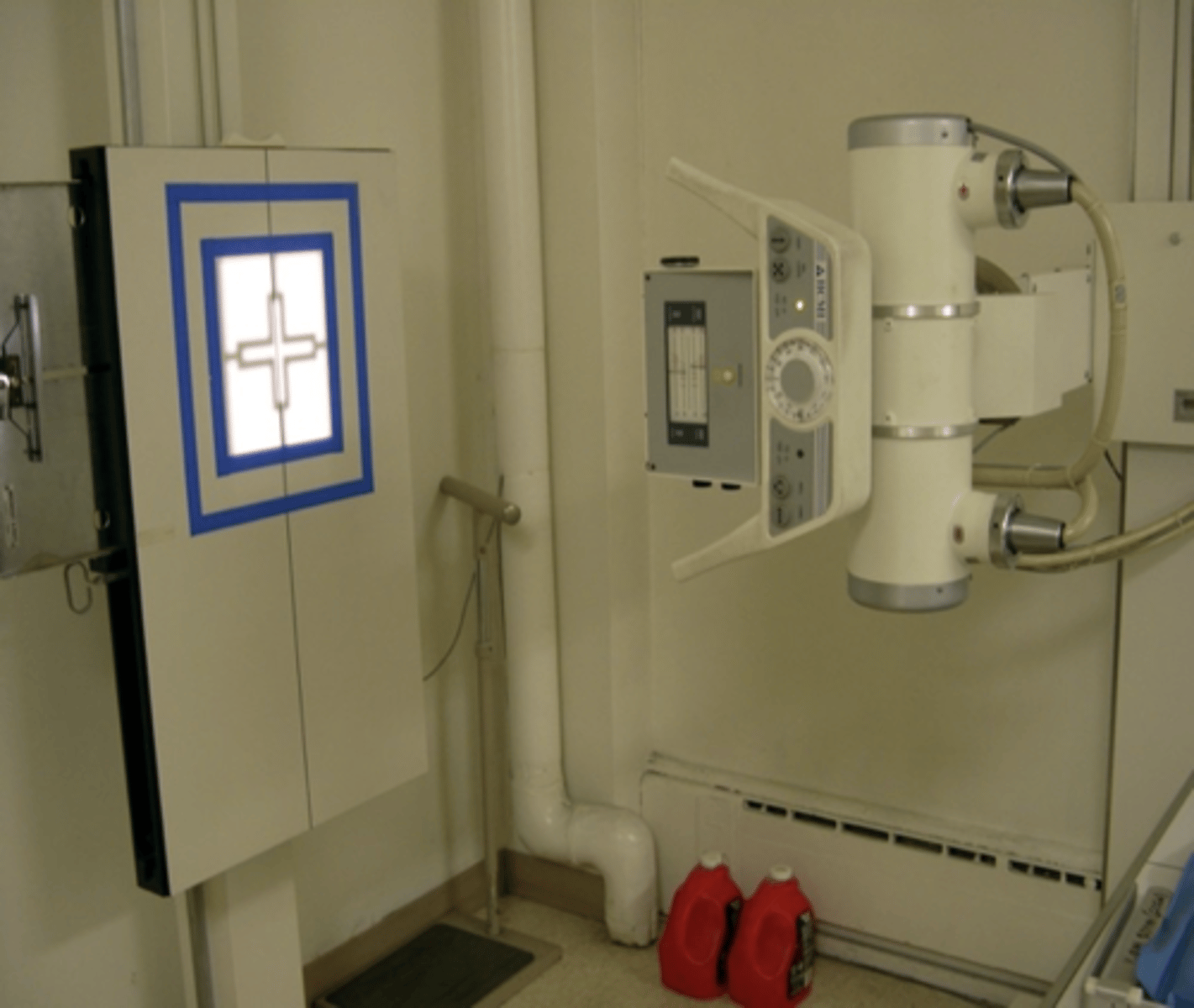
Increase mAs for more thickness
Patient thickness effect on factor selection
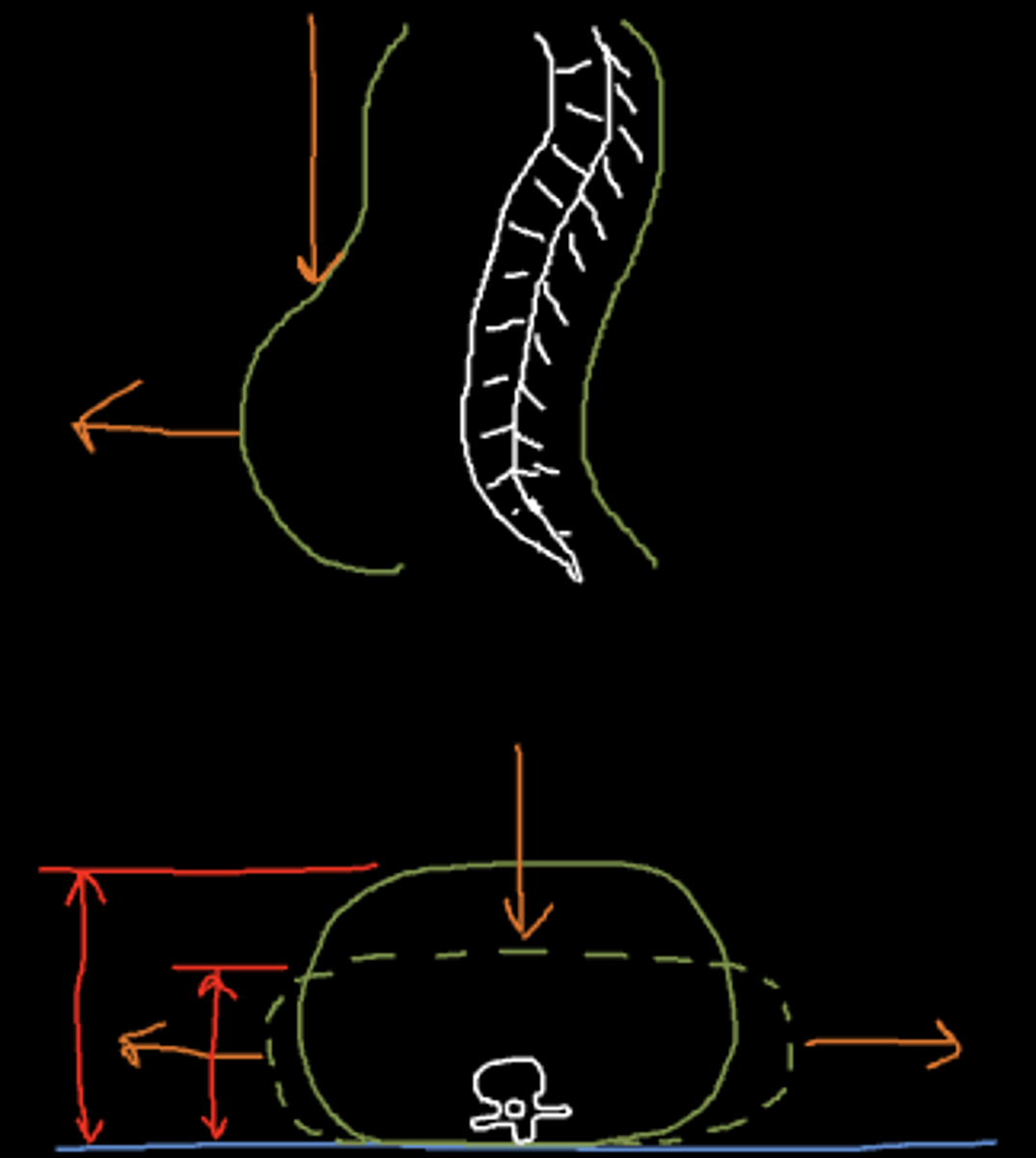
Compression devices
_____ also help decrease tissue thickness

Grid
A _____ goes between the patient and film
- Post-patient scatter reduction
- Increases patient dose, but makes a better image
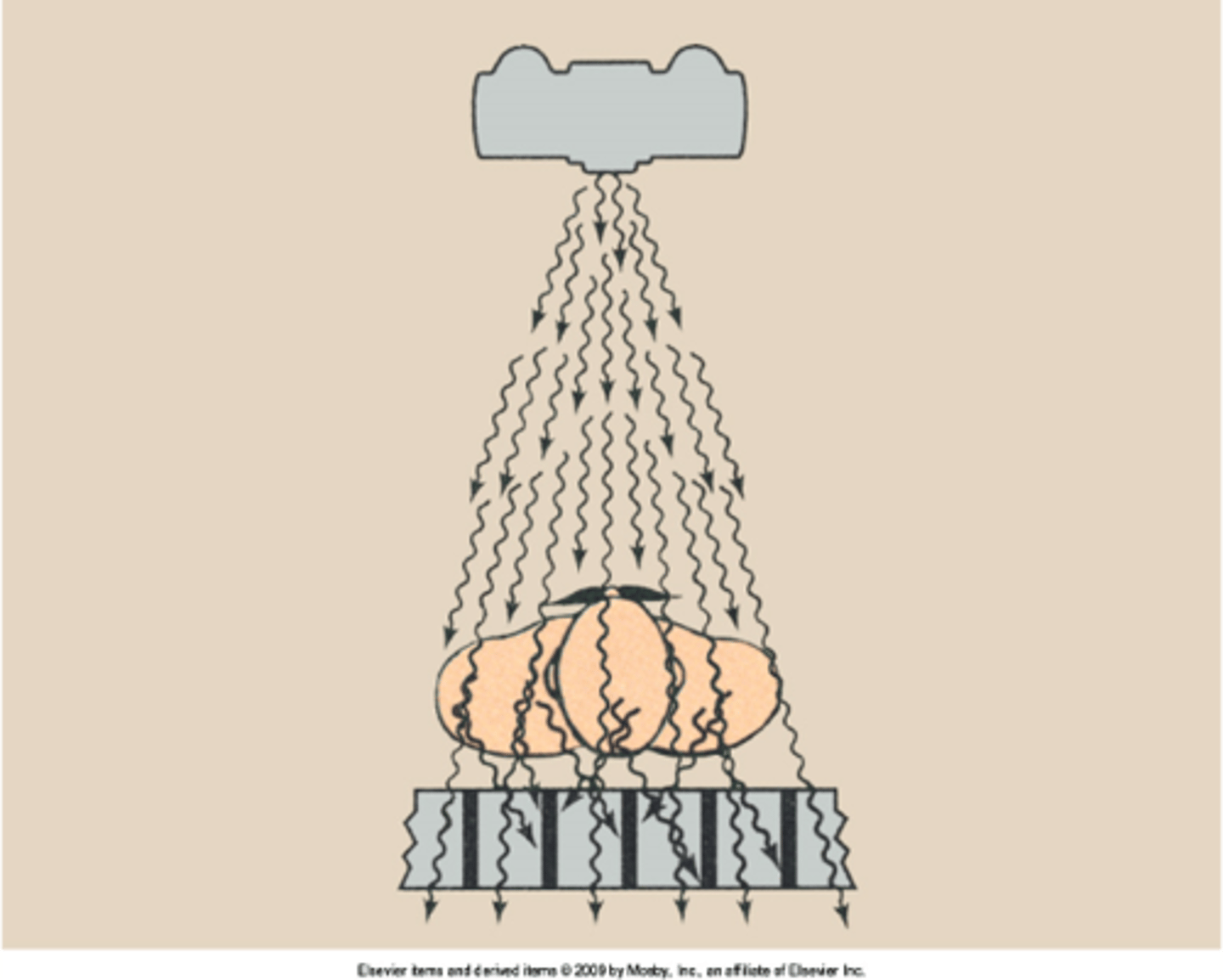
Increase mAs
When we use a grid, what do we adjust?
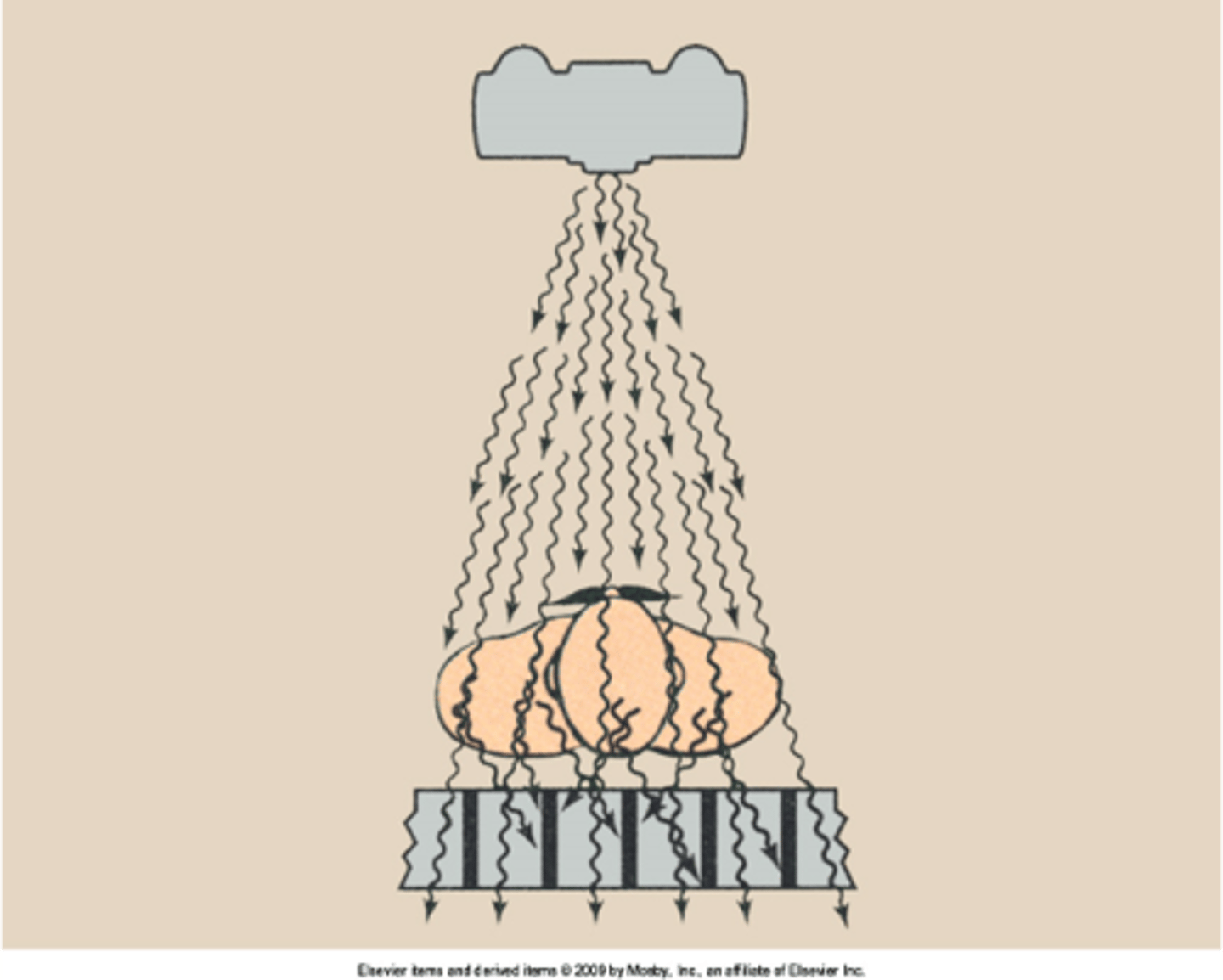
Decreased
How do grids affect density?
Higher contrast
How do grids affect contrast?
Increase, lines on image
How do grids affect artifacts?
- 12:1
- 100 lines/inch (minimum)
- Focal range 40-72"
- Linear
- Focused
- Stationary
State the recommended grid
Between patient and film
Where does the grid go?
12:1
Recommendaed grid ratio (line pairs per mm)
Lines per inch
Grid frequency
<90
_____ lines per inch results in distracting lines
>100
_____ lines per inch results in faint lines (tolerable)
Linear
Which grid pattern do we want?
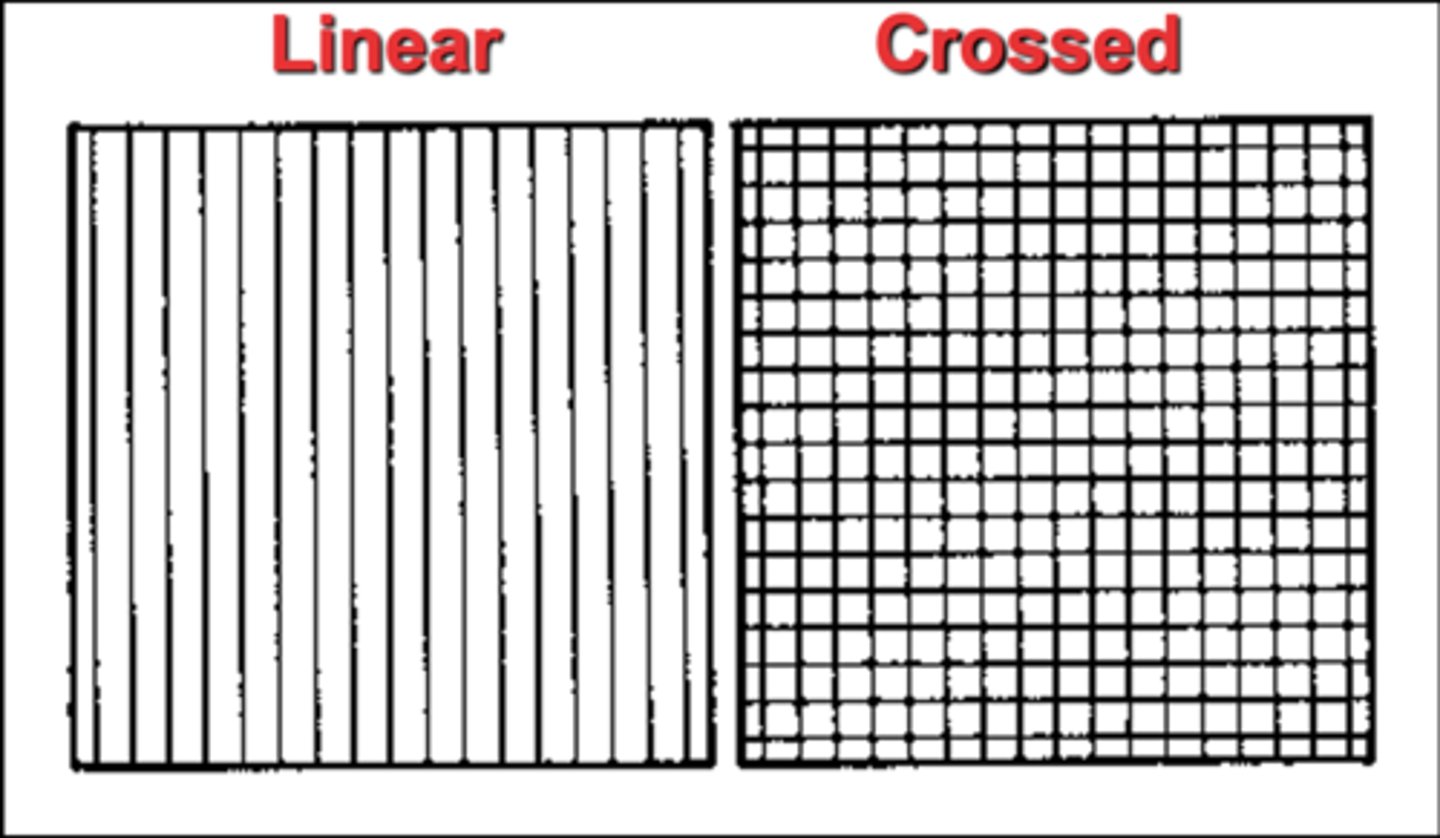
Focused
Which grid pattern do we want?
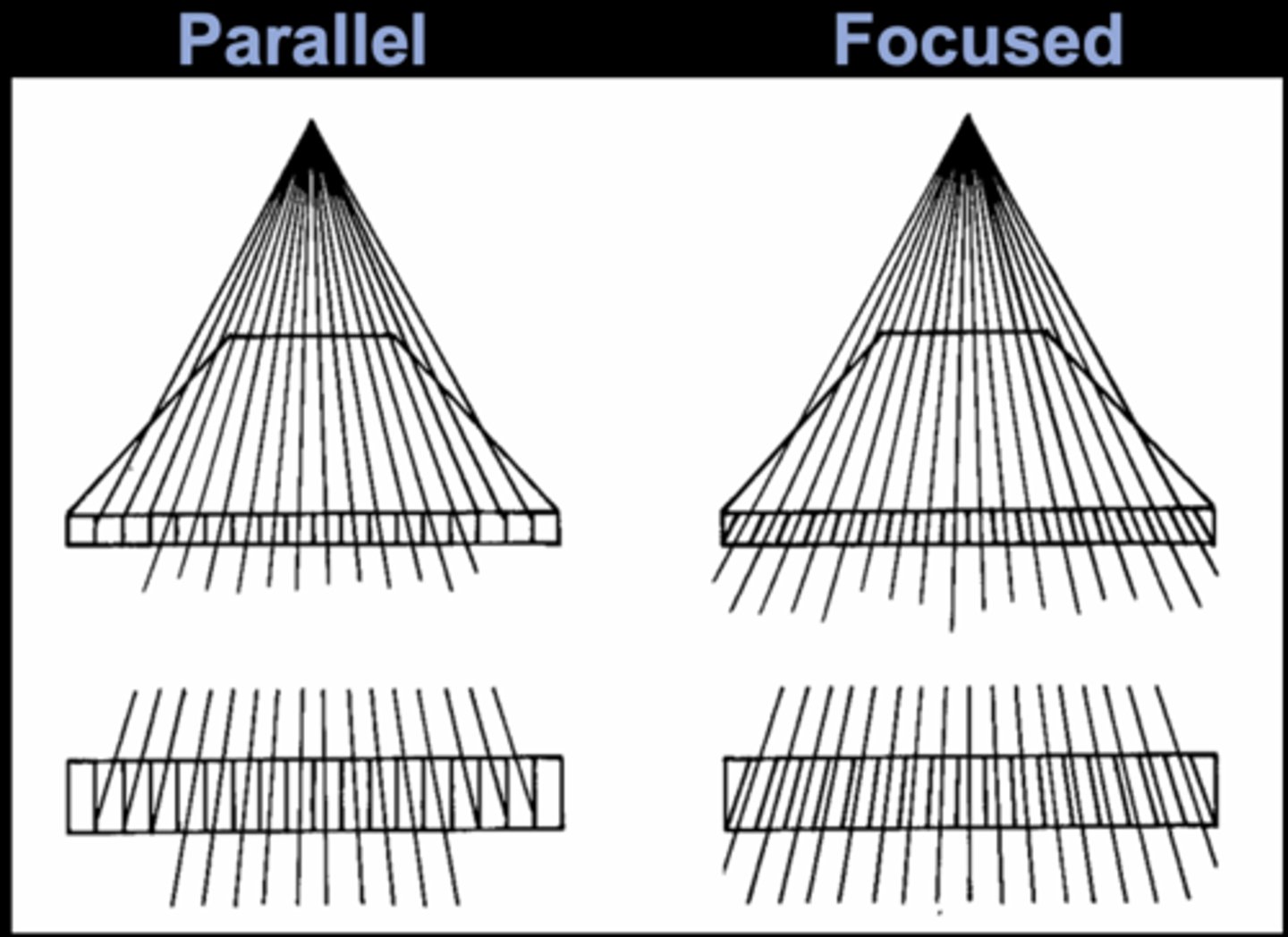
Off-level
This is an _____ grid
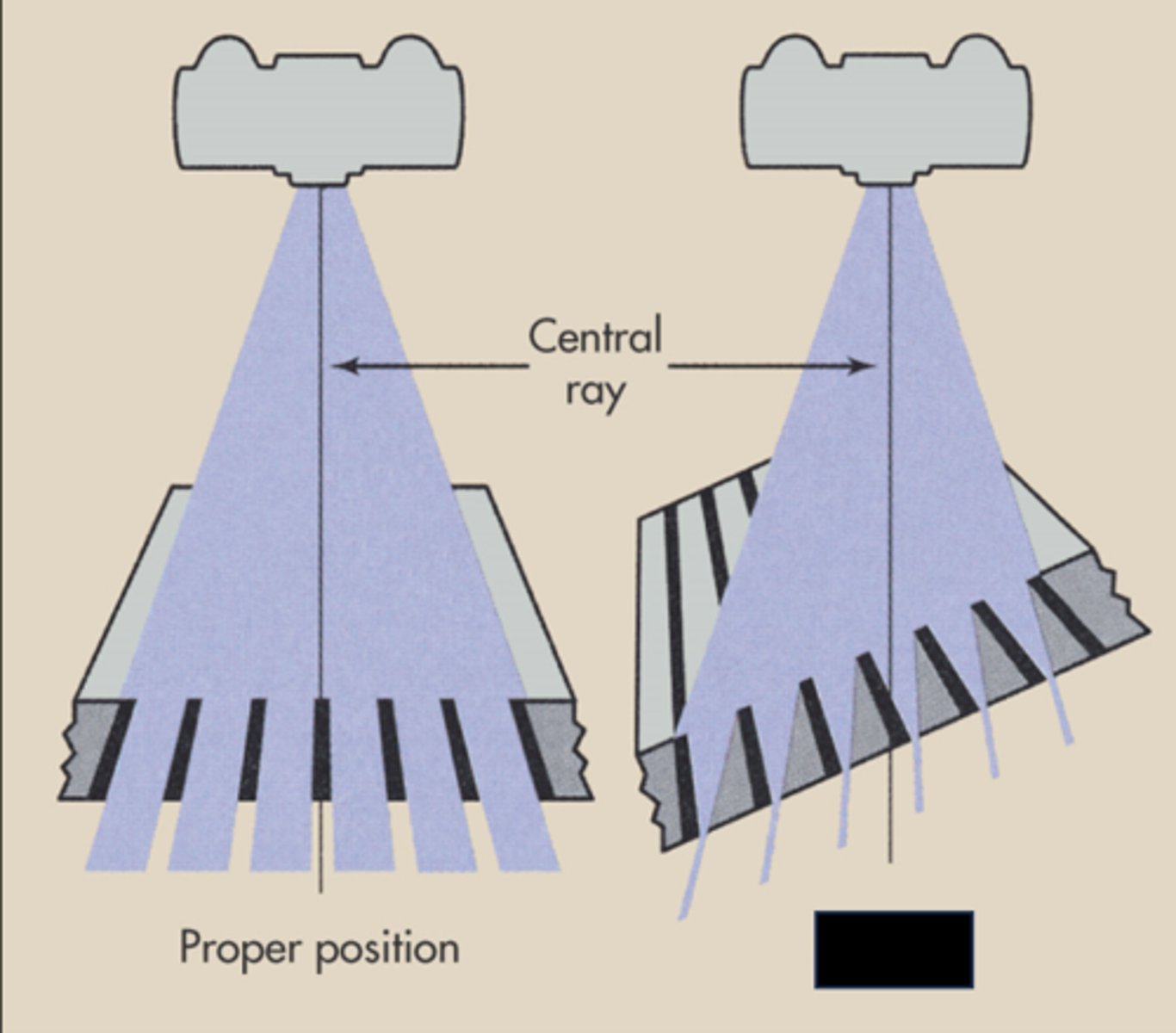
Off-center
This is an _____ grid
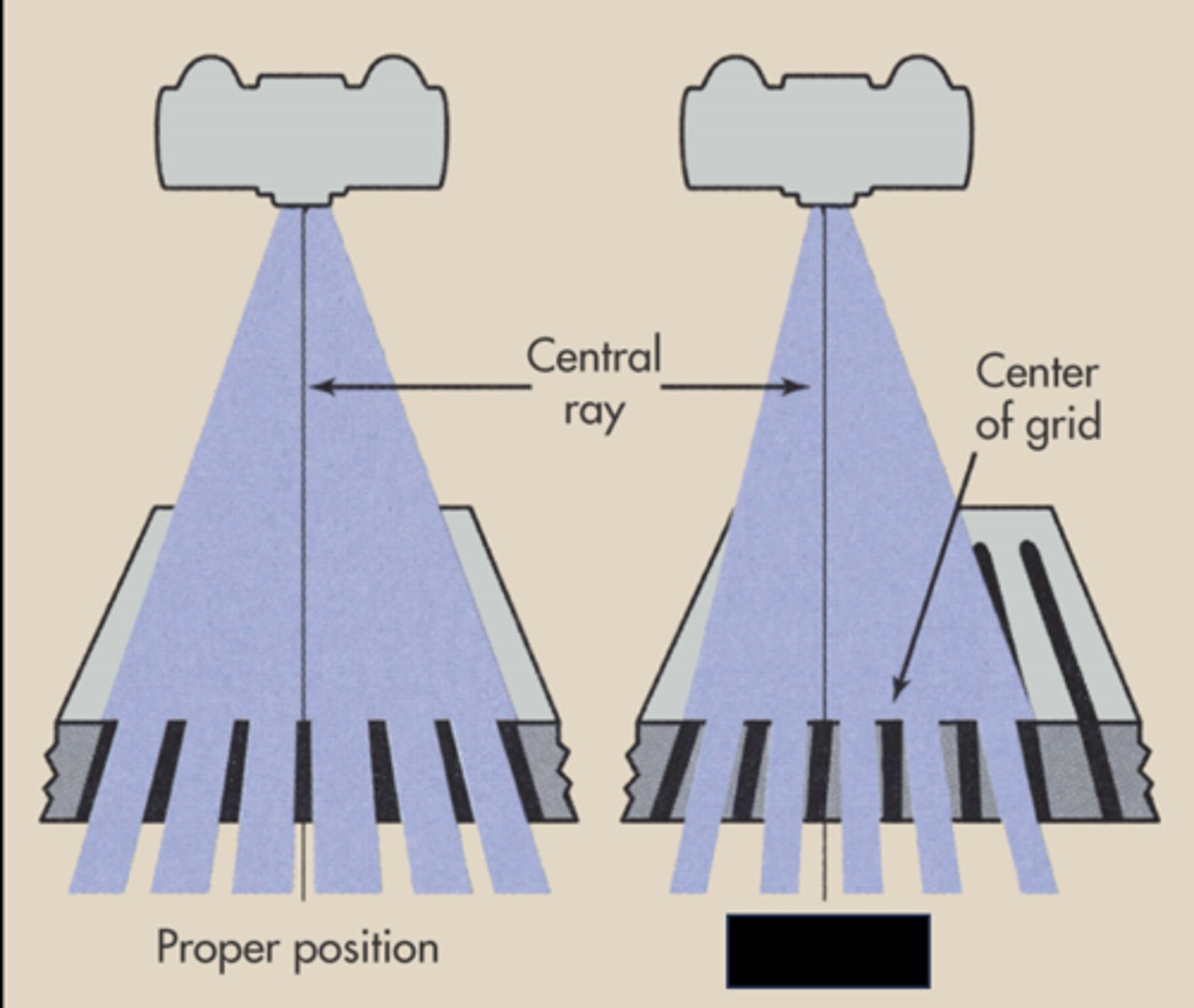
Off-focus
This is an _____ grid
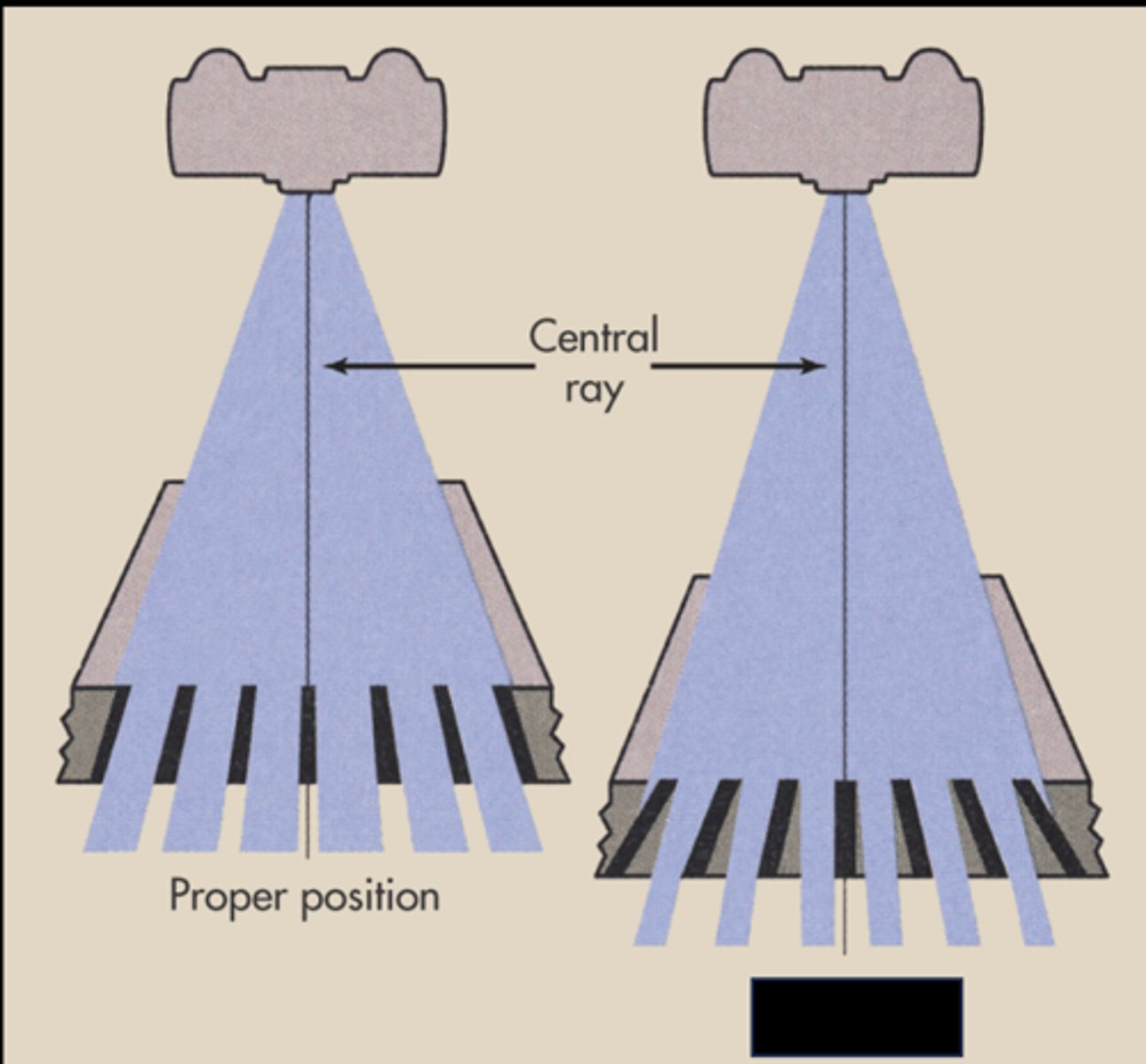
Upside-down
This is an _____ grid
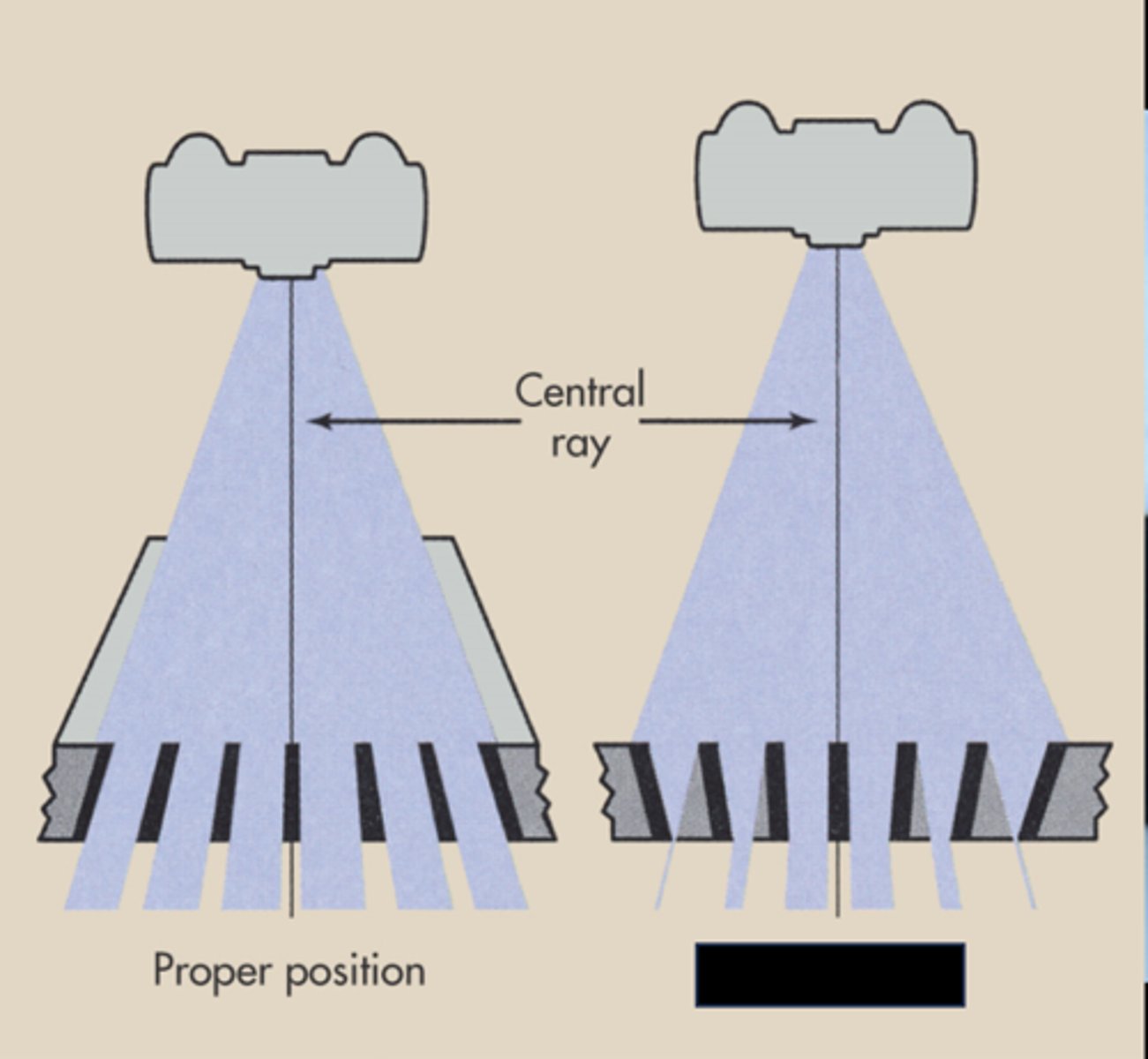
60%
The introduction of 1 mm of aluminum filtration reduces the skin dosage by _____

80%, 70%
2 mm of aluminum reduces skin dosage by _____ at 50Kv and _____ at 100 kV

Filtration
_____ changes beam quality and quantity
- Patient exposure
- Image quality
- Inherent
- Added
- Compensating
State the types of filtration
Total
Inherent filtration + added filtration = _____ filtration
- 2.5 mm aluminum equivalent
Inherent
_____ filtration: total of about 0.5 mm aluminum equivalent
- Tube
• Glass envelope
• Oil
Added
_____ filtration: total of about 2 mm aluminum equivalent
- Added aluminum between the collimator and the tube
- Collimator mirror
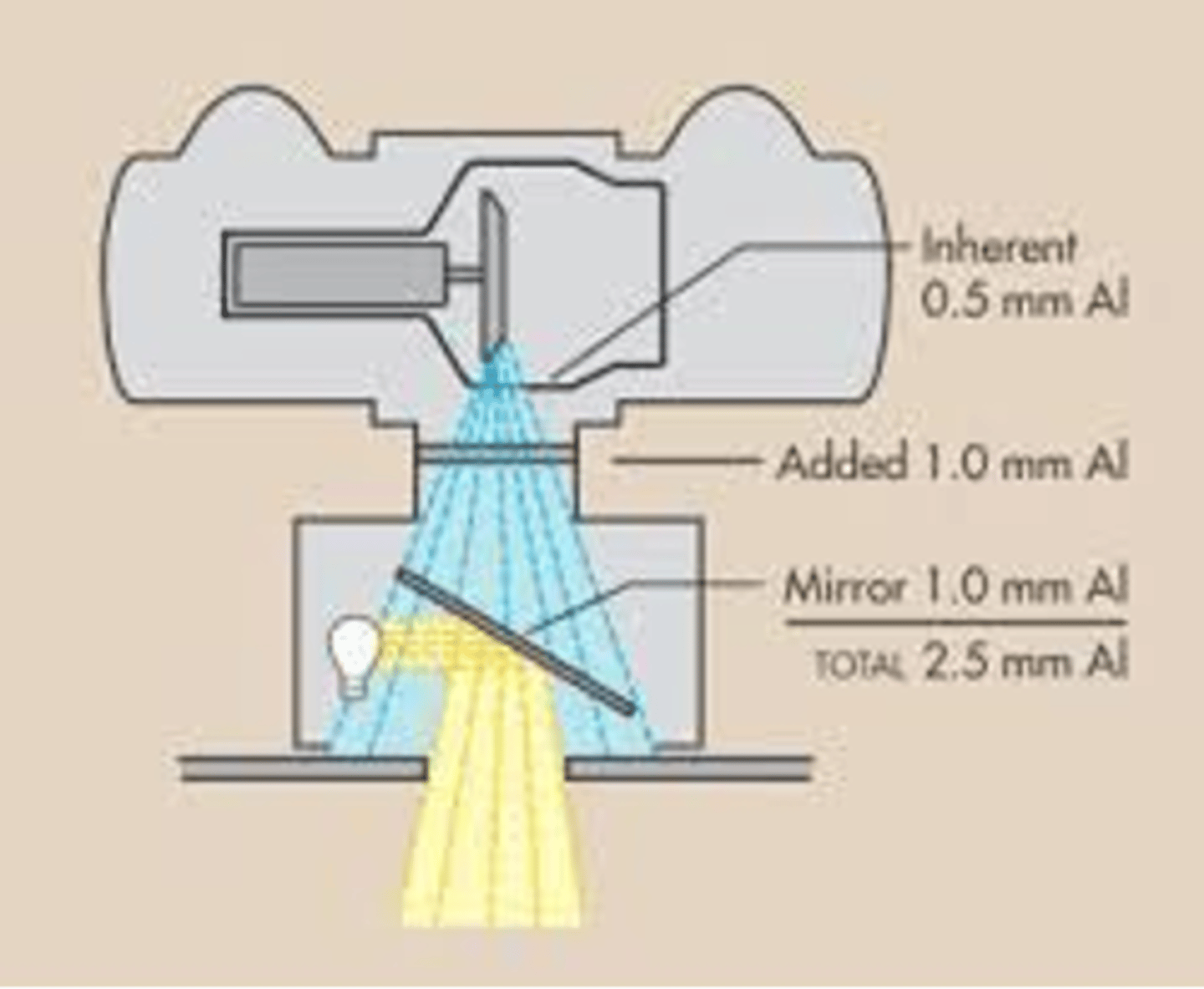
Beam hardening
Weaker photons preferentially removed
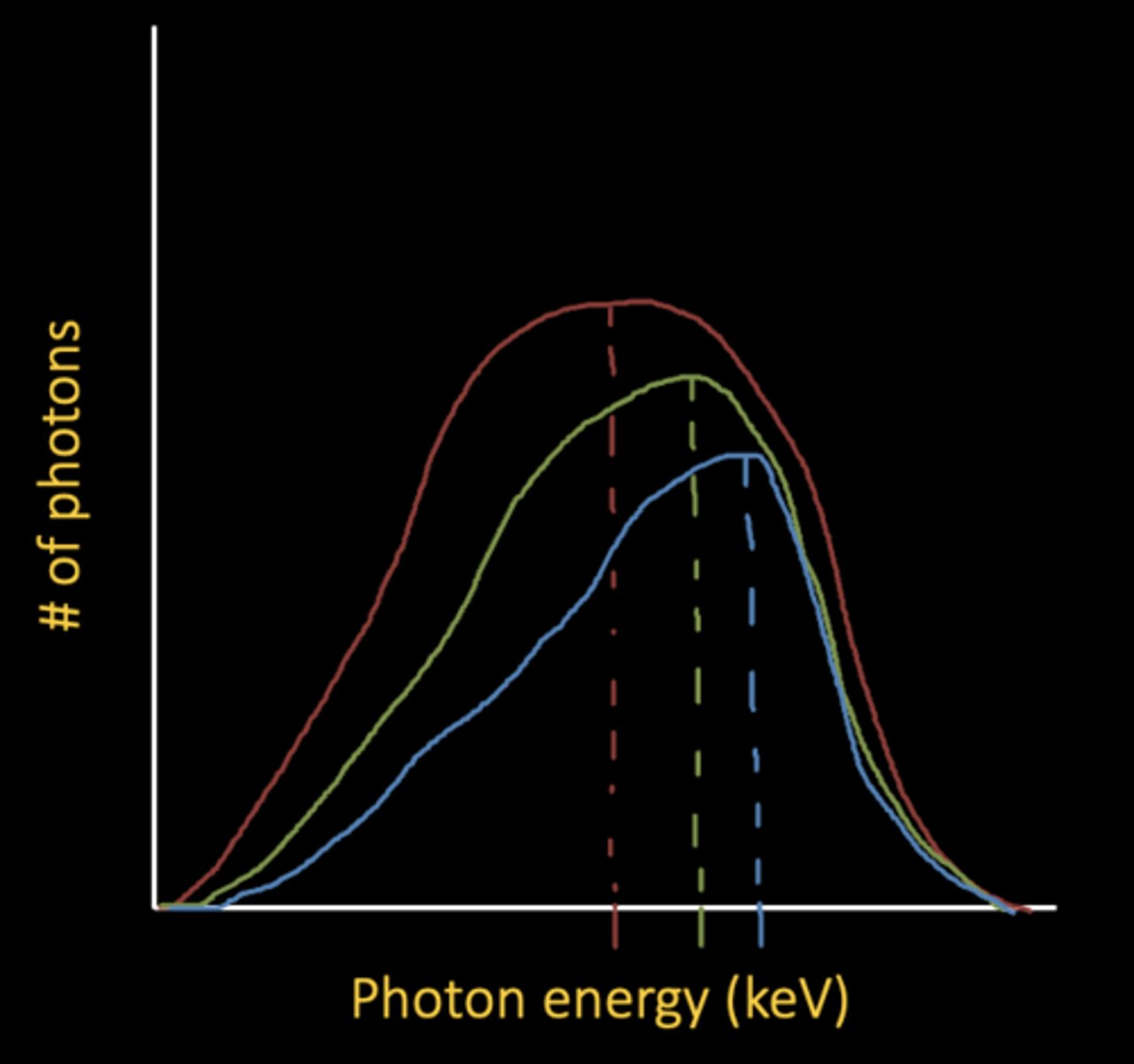
Decreases
Beam hardening _____ beam quantity
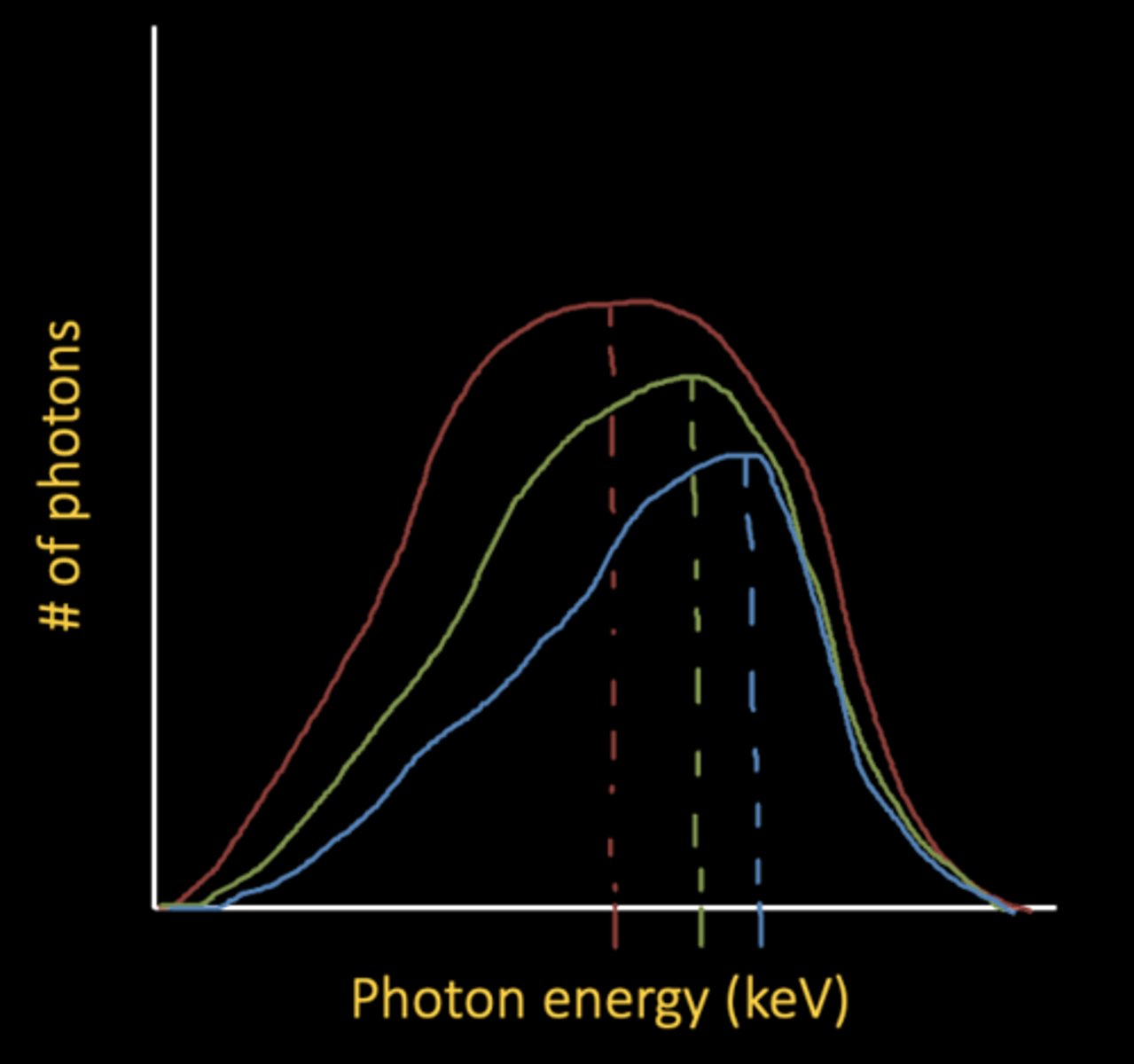
Increases
Beam hardening _____ beam quality
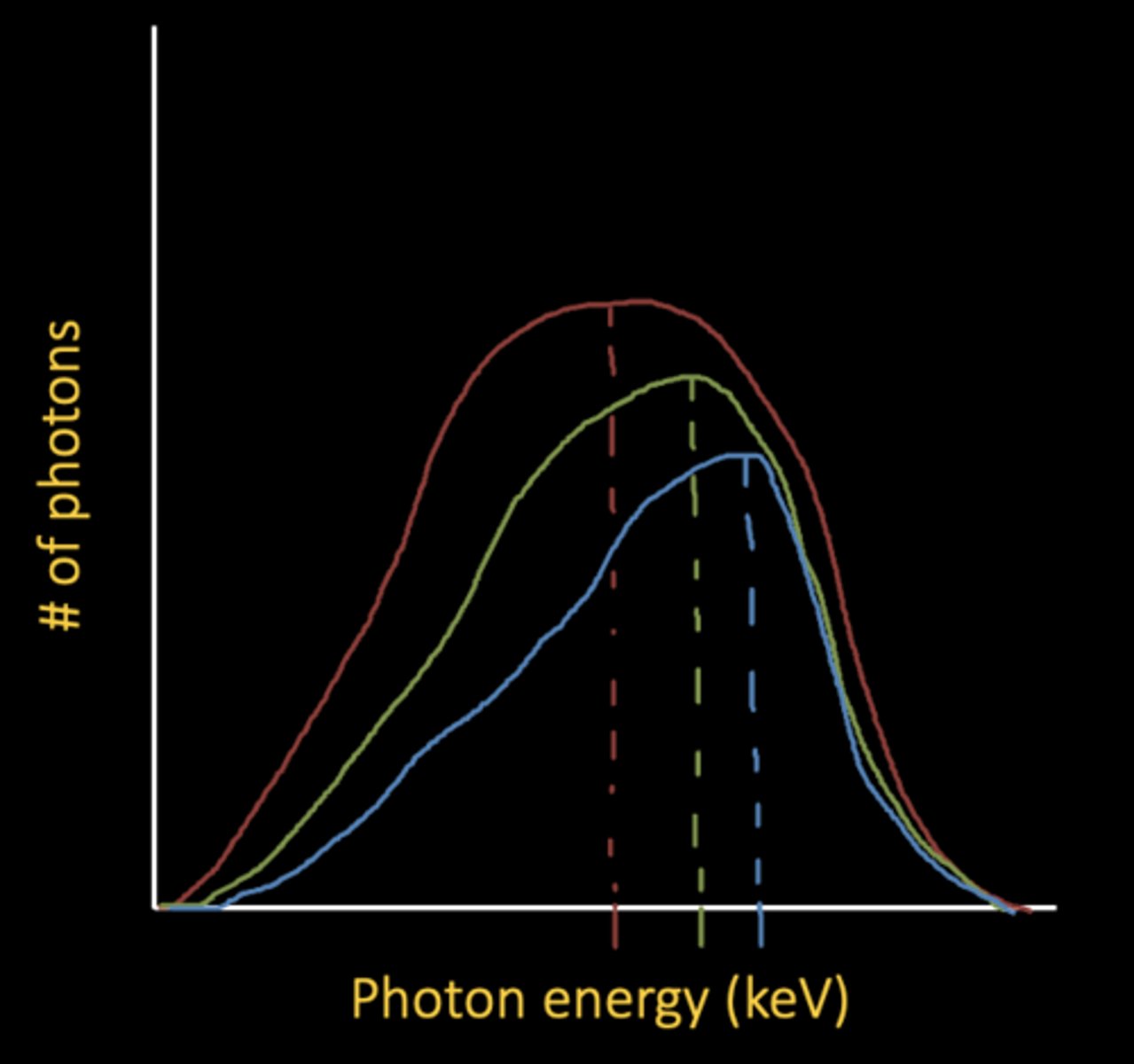
Half-value layer (HVL)
- Thickness of material required to attenuate 1/2 the photons in the beam
- Permits equivalency of different materials
12.5%
- First HVL removes 50% of initial photons
- Second HVL removes 50% of what's left
- Third HVL removes 50% of what's left
What percentage of beam remains after 3 HVL's?
Compensating filters
- Applied by technician when setting up for exposure
- Composed of:
• Aluminum
• Copper
• Rare earth metals
- Used to compensate for various tissue thicknesses
• Thoracic spine
• Foot
• Shoulder (AC joint)
